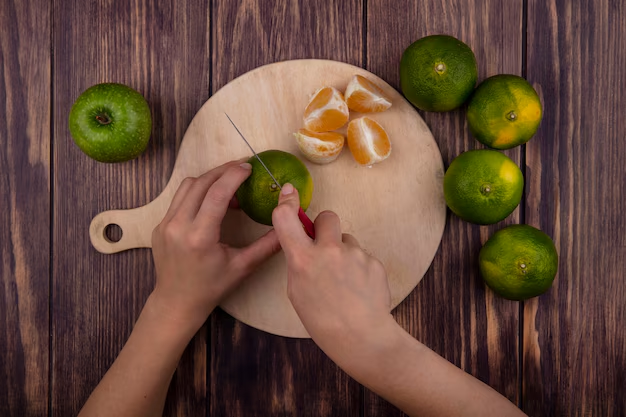Creating Crunchy Refrigerator Pickles: Your Ultimate Guide
Imagine biting into a crisp, tangy pickle that you crafted yourself. Perfectly crunchy and bursting with flavor, homemade refrigerator pickles are a delight for the senses. The great news? They're surprisingly easy to make at home, and there are tips and tricks to ensure your pickles stay crunchy every time. Let's dive into the art of crafting the crunchiest refrigerator pickles, explore the essentials, and unveil the secrets to achieving that perfect texture.
🥒 The Allure of Crunchy Pickles
There's something irresistibly satisfying about the crisp snap of a perfectly pickled cucumber. Whether added to a sandwich, chopped into a salad, or enjoyed straight from the jar, crunchy pickles are a pantry staple many love. But anyone who has attempted homemade pickles knows the challenge of keeping them crunchy. Here, you'll find the critical elements to ensure your pickles maintain that coveted crunch.
Why Crunch Matters
The texture of a pickle plays a significant role in its overall enjoyment. A soft or soggy pickle can feel unappetizing, while a crunchy one offers a delightful experience. Crunchiness is not just about texture; it signifies freshness and quality. Here are the main factors that affect the crunch of your pickles:
- Cucumber Type: Picking firm, fresh cucumbers is crucial.
- Brining Process: Proper brining minimizes sogginess.
- Storage Method: The right storage maintains crunch over time.
🔍 Understanding the Basics
Before we dive into methods and secrets, it's essential to cover the basics. Knowing what you're starting with can make all the difference.
Choosing the Right Cucumber
Not all cucumbers are created equal, especially for pickling. Here's what to look for:
- Pickling Cucumbers: These are smaller with thin skins, making them ideal for pickling.
- Freshness: Opt for firm, unwilted cucumbers for the best crunch.
- Uniform Size: Even-sized cucumbers ensure consistent pickling throughout.
The Role of Salt
Salt is vital in pickling, but it's not just about flavor:
- Draws Out Moisture: Salt helps remove excess moisture from cucumbers, reducing the risk of them becoming waterlogged.
- Texture Preservation: It enhances the expression of natural flavors while maintaining firm texture.
🥒 Step-by-Step Guide to Making Crunchy Refrigerator Pickles
Now that we've covered the essentials let's walk through the pickle-making process from start to finish. Follow these steps to discover how to make crunchy refrigerator pickles at home.
Ingredients You'll Need
To get started, gather these key ingredients:
- Fresh Cucumbers: As discussed, pickling types are preferred.
- Salt: Pickling salt or kosher salt for the best results.
- Vinegar: White vinegar or apple cider vinegar.
- Sugar: Balances the acidity.
- Water: Needed for the brine mix.
- Spices: Dill, garlic, mustard seeds, and peppercorns are common choices.
Step-by-Step Instructions
Prepare the Cucumbers: Wash thoroughly and cut off the blossom end. This stem end contains enzymes that can soften pickles.
Create the Brine:
- Mix equal parts vinegar and water, adding salt and sugar to taste. Heat until dissolved.
- Add spices to the hot brine to let the flavors meld.
Jar and Pack:
- Pack cucumbers tightly in sterilized jars, leaving some space at the top.
- Pour hot brine over cucumbers, ensuring they are completely submerged.
Seal and Refrigerate:
- Seal jars with lids and let them cool to room temperature before refrigerating.
- Allow pickles to develop flavor for at least 48 hours, though a week gives deeper flavor infusion.
🌟 Secrets for Extra Crunch
To elevate your pickling game, here are expert-tested methods and ingredients that contribute to extra crunch:
Alum and Other Additives
- Alum: Historically used for keeping pickles firm. Use in moderation and check health guidelines.
- Calcium Chloride: A food-safe option that maintains crunch without affecting flavor.
Ice Bath Technique
Refrigerate cucumbers in ice water for a couple of hours before pickling. This helps seal in the natural crunch, making them less likely to soften during the brining process.
Grape Leaves
Incorporating grape leaves into the pickling jar is a traditional method. They contain tannins, which can prevent pickles from becoming mushy.
🚀 Recap: Tips for the Crunchiest Pickles
In summary, follow these expert tips for pickles that stay crisp and delicious:
- Choose firm, fresh cucumbers designed for pickling.
- Use pickling or kosher salt to improve flavor and texture.
- Consider calcium chloride to maintain crunch.
- Brine with care, keeping cucumbers fully submerged.
- Refrigerate properly in sterilized jars.
📋 Quick Tips and Tricks
Here's a quick list of practical tips and tricks to ensure those pickles are always crunch-tastic:
- 🥒 Stay Cold: Always keep pickles refrigerated to preserve crispness.
- 🌿 Flavor Exploration: Experiment with different spices like chili flakes for a spicy kick.
- 🍶 Vinegar Variations: Try mixing different kinds of vinegar for a unique depth of flavor.
- ⏲️ Patience is Key: While eager to taste, give your pickles time to absorb flavors—between three days to a week can make a noticeable difference.
Crafting perfectly crunchy refrigerator pickles requires attention to detail and a little patience. By choosing the right ingredients and applying some secret methods, your homemade pickles will undoubtedly stand out for their exceptional crunch. Embrace the joy of pickling and enjoy the fruits—or in this case, the vegetables—of your labor. Happy pickling!
